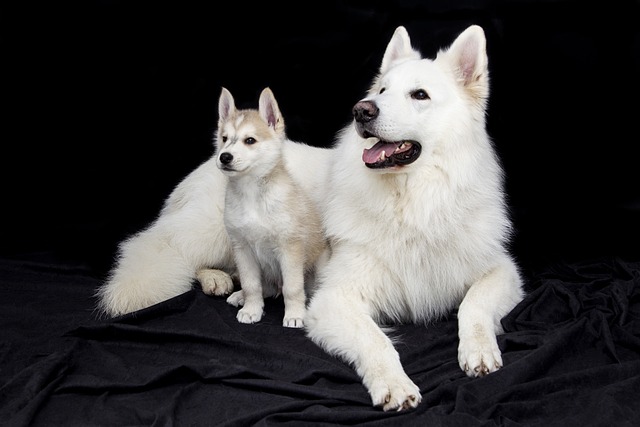
How can I tell if my dog's heatstroke is serious
Let’s be real: It’s a sticky August morning in Los Angeles, and you took your 2-year-old Golden Retriever, Max, for a walk a little later than usual
How to care for a senior dog? For new owners watching their once-energetic pup gray around the muzzle and slow down on walks, this question becomes a daily focus. Senior dogs—typically 7+ years old, though larger breeds age faster—have unique needs shaped by time, but with thoughtful care, they can thrive in their golden years. Caring for them isn’t just about managing aging; it’s about adapting to their changing bodies, keeping them comfortable, and cherishing the calm, loving companionship they offer.
Aging affects dogs in visible and subtle ways, much like humans. Joints stiffen as cartilage wears down, making stairs or jumping onto couches harder—common in active breeds like Border Collies or large breeds like Great Danes. Senses dull: hearing fades, vision clouds, and even smell (their strongest sense) weakens, affecting appetite. Digestion slows, so food that once agreed with them may cause gas or loose stools, while energy levels drop, turning long hikes into short strolls. These changes aren’t signs of decline—they’re signals to adjust how you care for them, meeting their needs with patience instead of frustration.
Practical care starts with tailored nutrition and gentle exercise. Switch to senior-specific dog food, formulated with lower calories (to prevent weight gain, which strains joints) and added glucosamine (supports cartilage) or fiber (eases digestion). A 10-year-old Golden Retriever, for example, might benefit from smaller, more frequent meals to avoid overloading their slower metabolism. Exercise should be consistent but low-impact: 10–15 minute walks twice daily, gentle play with soft toys, or swimming (easy on joints) if they enjoy water. Avoid hard surfaces—add rugs to slippery floors to prevent falls, and use ramps for couches or beds they still love to join you on.

Prioritize comfort and routine. Senior dogs thrive on predictability: feed, walk, and play at the same times daily to reduce confusion. Provide a orthopedic bed in a warm, quiet spot (away from drafts) to ease joint pain—even a small Chihuahua will appreciate the extra cushioning. Check their paws weekly for cracks (dry skin is common) and brush their coat gently to boost circulation, turning grooming into bonding time. Twice-yearly vet checkups are a must—senior dogs’ health changes faster, and early detection of issues like arthritis or thyroid problems makes treatment easier. Ask about dental care too; older dogs often develop gum disease, which affects overall health.
In the US, responsible care aligns with legal and cultural norms. Keep your senior dog current on mandatory rabies vaccines, required in all states—fines for lapses reach $500 in states like California, and protecting their health includes strong immunity. When walking, always carry waste bags—cities like Houston fines owners $150 for uncollected waste, and slower walks mean more opportunities to clean up promptly. Culturally, patience is key: never scold a senior dog for accidents or slow movement. They’re not being “naughty”—aging blunts bladder control and mobility. Instead, praise small wins, like climbing one stair, to reinforce confidence.
For apartment dwellers, add non-slip mats near food bowls and beds to prevent slips. Create a quiet corner away from loud TVs or kids, where they can nap undisturbed. In community settings, keep walks leisurely—avoid busy dog parks where younger dogs might jostle them, and step aside politely for faster walkers, showing respect for both your senior pup and neighbors.
Caring for a senior dog is about adaptability: shorter walks, softer beds, and extra love. With attention to their needs, you’ll help them stay happy, healthy, and right by your side for years to come.

Let’s be real: It’s a sticky August morning in Los Angeles, and you took your 2-year-old Golden Retriever, Max, for a walk a little later than usual

You're enjoying a summer afternoon at the park when you notice your dog has stopped panting and appears disoriented - their gums are bright red

Let’s paint the picture: You’re in your Denver apartment, watching your 4-year-old Boston Terrier, Ruby, plop down mid-play session with her favorite toy

Many dog owners notice their pets nails seem shorter after regular walks,but how much does this daily activity actually help?The answer depends on where you walk—concrete sidewalks or asphalt streets gently file nails as a dog's paws hit the ground

Most dog owners notice their pup scooting across the carpet at some point, but few connect it to impacted anal glands. These small sacs near a dog’s rectum secrete a scent for marking territory

Most vets agree that regular dog teeth cleaning is key to avoiding painful dental issues later. For healthy adult dogs, a professional cleaning at the vet’s office every 12 to 18 months usually works well.